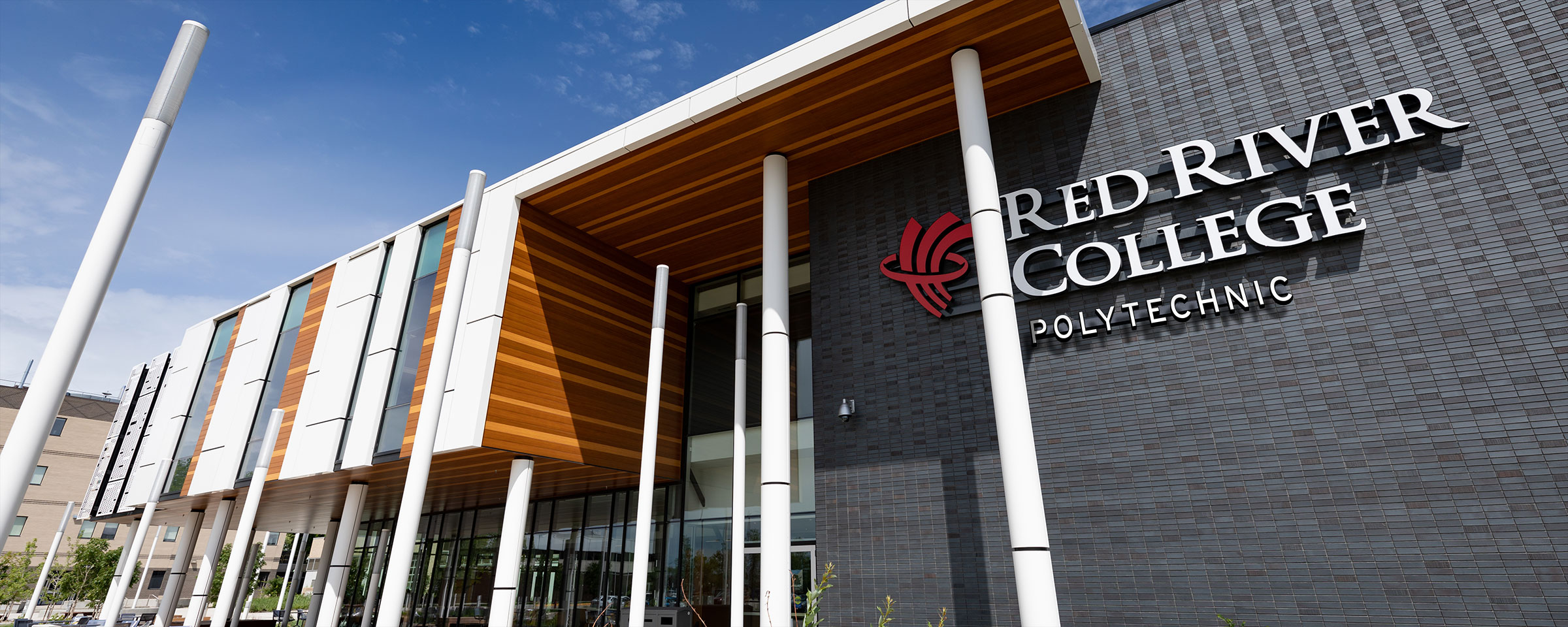QR Code Stickers for Hazardous Materials Inventory System
This week, you’ll notice stickers with QR codes being added to the doorways of most spaces across RRC Polytech-owned campuses. These QR codes are part of the College’s Hazardous Materials Inventory System (HMIS), used by Facilities Management and on-site contractors.
By scanning the QR code, our Facilities team and contractors have access to important information through the HMIS, prior to beginning any repairs or renovations in a space.
Presently, the QR codes identify asbestos-containing materials (ACM) in a given space. The information provided through the HMIS is in addition to the robust asbestos management program and procedures already in place at RRC Polytech.
Prior to 1990, asbestos was used in several different building materials in many public spaces in Manitoba. As the majority of RRC Polytech’s buildings pre-date 1990, some spaces inevitably have ACM, as do numerous buildings and homes across the province.
While the notion that a hazardous material is present in a space may seem unsettling, there is no risk posed to staff, students and/or visitors who are occupying the space. All ACM on RRC Polytech campuses are regularly inspected to ensure they remain encapsulated in a manner that prevents any asbestos fibers from becoming airborne and posing risk to occupants.
At RRC Polytech, we are committed to keeping you informed and updated on College-wide operations. For further information about the HMIS QR codes, please see the frequently asked questions, below, or contact Safety, Health and Security Services at safety@rrc.ca.
Frequently Asked Questions
What is the Hazardous Materials Information System?
The Hazardous Materials Information System, or HMIS, is a system that RRC Polytech uses to track information about hazardous materials contained within spaces. Only authorized Facilities Management team members and/or contractors have access to the system, to ensure they have the information needed before starting any repairs or renovations in a space.
What are the QR codes for?
The QR codes are primarily for providing information to Facilities Management and contractors on any hazardous materials that may be in the space. It is important that this information is available to our Facilities team and contractors prior to commencing any repairs or renovations that may impact these materials.
What types of hazardous materials do the QR codes identify?
At this time, the QR codes will identify asbestos-containing materials (ACM) in that space. The QR codes are in addition to the robust asbestos management program and procedures already in place at RRC Polytech.
What is asbestos?
Asbestos is a strong, fire-resistant mineral fiber that was formerly (prior to 1990) used in several different building materials, including in many public spaces in Manitoba, for its ability to insulate against heat or noise, its fire protection properties, and its ability to add structural strength to these materials. Exposure to airborne asbestos fibers can cause lung disease and cancer.
Am I at risk for asbestos exposure?
There is no risk to occupants in spaces with ACM where the materials are in good condition and left undisturbed. ACM that are in good condition do not create a risk for asbestos fibers becoming airborne. RRC Polytech campuses are regularly inspected to ensure ACM remain encapsulated in a manner that prevents any asbestos fibers from becoming airborne.
What happens after repairs or renovations are completed in a space with ACM?
After the completion of any repairs or renovations in a space with asbestos-containing material, the area is thoroughly cleaned and air testing is done by an independent lab to ensure there are no traces of airborne asbestos. Until this testing has been performed and the area certified safe, nobody is permitted to enter the space.
Are other hazardous materials on RRC Polytech campuses?
Certain materials can be hazardous when handled or treated improperly, which is why only designated staff and contractors handle these materials. Specific to materials contained within building infrastructure, ACM is known to be present in a capacity that does not pose risk to staff, students or visitors. Our Facilities Management and Safety, Health and Security Services teams continue to monitor our campuses for any potential hazards or risks.
Why are hazardous materials only being tracked now?
Hazardous materials have always been tracked through our robust program and procedures. The new HMIS QR codes help streamline how we track hazardous materials and simplify how the information is accessed.
